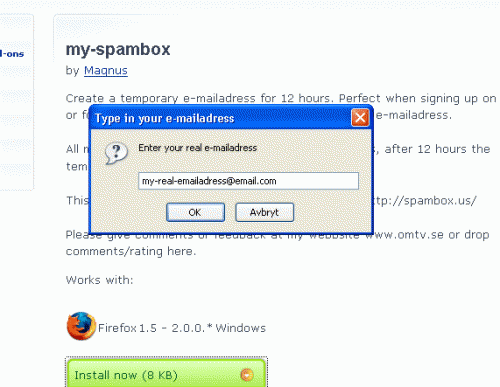Temporary email services are great when it comes to protecting one’s privacy on the Internet. They are especially useful during website and service sign ups, considering that a lot of services sell user information or use the information to send advertisements.
But, those disposable email addresses are not suited for all purposes. It is often not a good idea for instance to use a temporary email address for signing up with a service that the user wants to use on a regular basis. Why? Think of signing up for Facebook with a temporary email service. Most services of this kind allow anyone access to all email addresses, which means that any user knowing the email address, or stumbling upon it, could access the user’s Facebook account.
This possibility depends largely on the type of temporary email service though. The Firefox add-on My-Spambox adds capabilities right to the browser’s status bar to create a temporary email address.

It seems to use the temporary email service jetable for this. What it does is the following. The user enters an email address in the first field of the configuration window. This is the email address the temporary email address gets forwarded to.
My-Spambox creates the temporary email address then and the user can use it for the next twelve hours. After that the link is removed and the forwarding of email messages is no longer working.
The generated email address is automatically copied to the clipboard. There is however no history or log to access it again if needed. If the user loses the temporary email address there is no way to get it back, which should not be a huge problem on the other hand considering that a new one can be created right away.
My-Spambox is a Firefox add-on for all Firefox versions from 1.5 to the latest Firefox 4 nightly builds.
© Martin for gHacks Technology News, 2010. | Permalink | Add to del.icio.us, digg, facebook, reddit, twitter
Post tags: disposable email, firefox, firefox-add on, jetable, my-spambox, temporary email
Nenhum comentário:
Postar um comentário